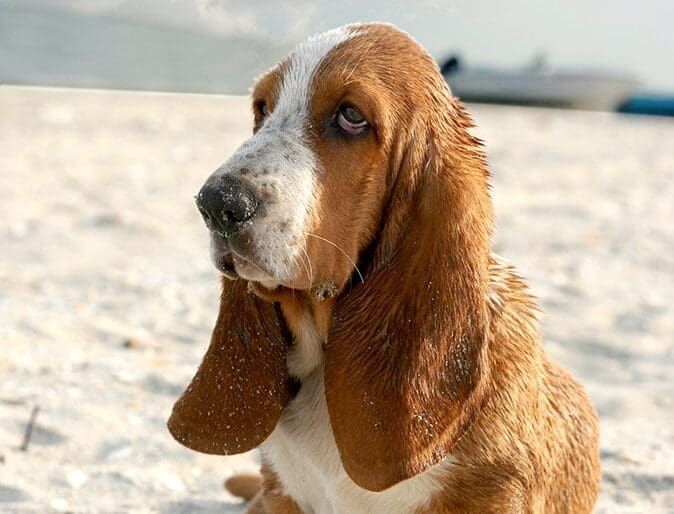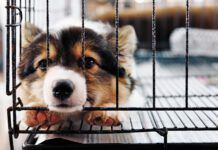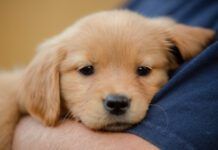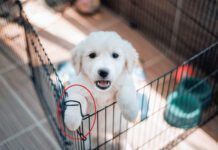One of the things I’ve discovered in my puppy classes is that many people assume socialization is simply about getting your dog around lots of people to be petted and plenty of dogs to play with. This can be a piece of the socialization package, but remember that the goal of socialization is to get your pup accustomed to and comfortable with the world around him.
Puppies need to be exposed in a pleasant way to the following things. Remember: don’t expose your puppy to everything at once, and please please do it in a way that is not forceful or overwhelming.
Puppy Exposure to Kinds of People
- infants
- toddlers
- older kids/teens
- adults/old people
- men and women
- people of different ethnicities/races
- big and small people
- people with sunglasses
- people wearing hoods, hats, backpacks, and umbrellas
- people in uniforms: police, medical, firefighters
- people with canes, crutches, or in wheelchairs
Puppy Exposure to People Doing Things
- running
- throwing balls
- kneeling down to garden
- doing yoga or tai chi
- standing on chairs or ladders
- using tools
- pushing brooms
- carrying bags and boxes
- vacuming
Puppy Exposure to Animals
- other dogs/dogs that look different to your pup
- cats
- horses
- chickens
- goats
- any other animal your dog may come into contact with
Puppy Exposure to Things That Move
- bicycles
- skateboards
- running kids
- kites
- motorcycles
- cars
- trucks
- fire engines
- running animals
Puppy Exposure to New Places
- your car
- the veterinarian’s office
- parks
- beaches
- shopping areas
- sidewalks with cars going by
- areas where you might walk or hike or vacation
- other people’s houses
- pet stores
Noises That Come with Everyday Life
- blow dryers
- kitchen appliances
- vacuums
- doorbells
- walk-sign beeps
- trucks backing up
- neighbors in their yards
- kids yelling
- babies crying
- wind and thunder noises
- fireworks
Puppy Exposure to Different Surfaces
- grass
- gravel
- pavement
- carpet
- shiny floors
- mulch
- sand
- wet surfaces outside
- the bathtub
Puppy Exposure to Handling
- touching for vet visits
- grooming
- patting heads
- hugging (Note: See “How Dogs Interpret Your Body Language,” to learn why WDJ does NOT recommend hugging dogs; we suggest you expose your puppy to hugs, however, because he is bound to receive one from somebody sooner or later)
- invasive interactions, such as people invading their space, taking things from them, hugging them without warning, and getting into their food
Other Puppy Exposure Ideas
- heavy rain
- people with surfboards
- boats
- tall buildings
- wild animals like skunks, raccoons and groundhogs







This was a great article and I’m going to share this with one of my friends because she just got a new puppy that’s 3 months old.
Great article! Thanks. All wonderful suggestions!
I would add elevators to the list – we took our Polly to Maine when she was 1, and she was terrified of the elevator in the hotel! I ran to the nearby Pet Store and found some delectable, smelly treats to entice her to go into it! Double lesson – introduce her to elevators before we need to use one, and never leave home without seriously smelly treats!
Add men with beards and/or mustaches. Our new vet has a short beard; and the first time I brought my older puppy to his office, Zen was a bit leery of him at first. Now he’s fine, but the first time was a little scary.
And not only elevators, add escalators and revolving doors. As a trainer and dog walker, I made sure to walk near our local hotels to expose not only the puppies but the older dogs as well.
I would add to “different surfaces” cardboard, metal plates, sturdy boxes, big plastic lids, plastic tarps, pieces of screen, anything weird you can add to this list so that the puppy isn’t afraid of stepping on the scale at the veterinary clinic. However, my two-year old dog will step on anything I ask her to at home but she still balks at the very scary scale at the vet’s office.